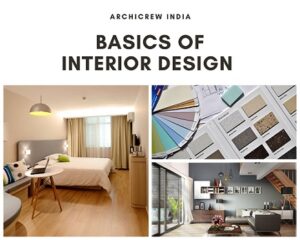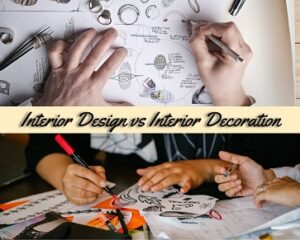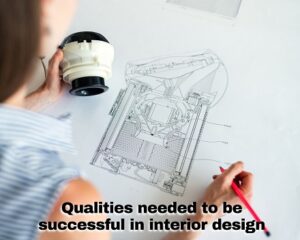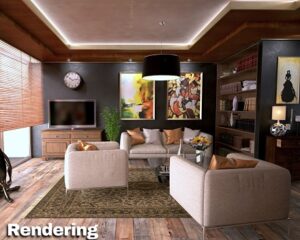 |
| Basics of Interior Design |
Are you observant?
- Most of us take interiors for granted.
- How often do you pay close attention to the
- Furniture/ space planning
- Colors
- Textures
- Lighting
- Ceiling
- Flooring
- 90% of our day is spent in interior spaces
 |
| 90% of our day is spent in interior spaces |
Your Challenge
- Start using your eyes more and pay close attention to your surroundings.
- Make mental notes on spaces that work and don’t work.
- Read trade magazines, study the pictures, and read the advertisements.
- You learn by exposing yourself to good design.
- If you must work, try to work in a related discipline.
- Last & the most important read each and every blog post by ArchiCrew India.
All you touch and all you see is all your life will ever be.
Definition of an Interior Designer
The professional interior designer is qualified by education, experience, and examination to enhance the function and quality of interior spaces for the purpose of improving the quality of life, increasing productivity, and protecting the health, safety, and welfare of the public.
 |
| Definition of an Interior Designer |
Interior Design vs Interior Decoration
 |
|
|
These are not the same.
- The decoration is one aspect of design and deals with the aesthetic embellishment of a space…making things look nice.
- Design deals with a more comprehensive approach that is all about human behavior and human interaction.
- Many decorators do not have a college degree and cannot be licensed with legislation laws.
- You don’t need a college degree to decorate…
History of Profession
 |
| History of Profession |
- Craftspeople, artisans, and architects created the earliest interiors, long before interior decorating/ design was a profession.
- Only the wealthy could afford such luxuries.
- A relatively new profession
- Architects, artisans, and craftspeople created the earliest interiors before interior decorating existed.
- Only the wealthy could afford such luxuries
- Elsie de Wolfe: First Interior decorator at the turn of the century, 1900. An actress and a high society figure, her style was a popular departure from the dark Victorian styles of that time. She was the first to charge for her design, not simply on commission.
- The industrial revolution of the 19th century
- Mass-produced furniture, new products like plastics
- Displayed in Department stores
- Appealed to the average consumer
- Bauhaus School in Germany, 1919: Walter Gropius focused on function. Closed in 1933 and faculty came to the US
Decoration to Design
- The 1940s was when there was a shift away from decorating
- More commercial development, corporate offices
- Those practising commercial design
- Dorothy Draper: First Interior designer
- Many of the greatest leaders you will study were decorators, not designers in today’s sense of the word.
- Sister Parrish, Eleanor McMillen Brown, Dorothy Draper, Billy Baldwin, Florence Knoll.
Qualities needed to be successful in interior design
 |
| Qualities Needed to be Successful in Interior Design |
Interior design is all about
* Problem-solving
* But you will also need to be
- Artistic
- Analytical
- People-oriented
- Business-oriented
Artistic
- Good with color and light
- Understand texture and how it relates to the overall concept
- VISION….Must be able to visualize
- Ability to render, build models
- Good composition skills
- Good graphic design
- Good sense of scale and proportion
- Must be able to graphically present ideas
Analytical
Problem-solving through the analysis of detailed criteria.
- Creating and staying in a budget
- Reading blueprints
- Working with spreadsheets
- Estimating materials
- Researching codes
- Specifying materials and furniture (example)
- Project management
People-Oriented
- You should enjoy being around all kinds of people and their individual personalities.
- You should be able to work under difficult customer parameters
- You are patient and respectful
- Can read between the lines, listen well
- Can work in a team environment
- Presents well, verbally and appearance
- Can work with vendors and contractors
- Can sell yourself and your ideas
- Can make customers feel calm during tense situations…reassuring
Business Oriented
- You should understand how businesses work and make profits…it’s not about how much time you spend on a project! It’s about the PROFIT you bring to the company.
- Understands marketing strategies (be flexible)
- Good grammar: writing legal contracts, proposals
- Good at a business networking
- Good record keeper (phone records, timesheets)
- Computer and equipment skills
- Hard work ethic
- Sales, good verbal skills
Where will designers work?
- Architectural Firms
- Facilities Management Teams (Large Corporations)
- Hospitals
- Military Bases
- Contract Furniture Dealerships
- Hotel Planning
- Retail Planning
- Manufacturer’s Rep
- Self Employed
Large vs. Small firms
- Affected by economic conditions
- Large firms:
- Teamwork
- Part of a large plan
- Usually will assist a senior designer
- Small to Medium firms
- Will get more experience
- Less team workwear multiple hats
- Work will be more localized and limited to local culture
Required Documents for a design project
- Client interviews or questionnaires
- A designer should take accurate notes during this time.
- Estimating forms are then drawn up and used to show the client a ballpark figure.
- Time records are used to keep track of time spent working with a particular client.
Ethics of professional practics
- Ethics are the rules or standards governing the conduct of the members of a profession.
- A work ethic is a belief or guiding philosophy that motivates a person to do a good job.
- Badmouthing other firms, overbilling clients, taking supplies to use at home, and taking copies of software are all examples of unethical practices in interior design, as well as in any career.
- Many professional organizations for interior designers offer a code of ethics and also a way to file a complaint.
Personal Qualities and Effective Communication
- Know your information well and if you are unsure, take every measure to find the answer
- Come prepared and on time to a meeting. If you are going to be late be sure to call.
- Meeting at the client’s house is best, but be flexible to their needs
- Avoid “filler” words such as uh, huh, umm, like, etc.
Presentation Drawings
- Exterior Perspective
Pictorial drawing of the outside of a home that shows the building in its complete form
- Interior Perspective
A pictorial drawing of a room or other area of the inside of a house
Usually three walls, floor, ceiling, and furnishings
- Presentation Floor Plans
Can be basic room layout, traffic flow, furniture/appliance placement
Renderings: addition of shades, shadows, texture, and color to a line drawing
 |
| Interior Rendering (Presentation drawing) |
Pencil
- Most popular form using a soft lead pencil
Ink
- Produces a sharper line and finer detail
- Shading is accomplished by using dots and cross lines
Watercolor
Gives a realistic appearance
Colored Pencil
Shading is easily achieved
Felt Tip Marker
Colorful and dramatic
Appliqué
- Supplies color, shading, and texture to an image
- Provides uniform look
Airbrush
- Usually preferred by professional illustrators
- Produces smooth gradation of tones and a realistic appearance
Presentation Boards
- Contain drawings, samples, and any other materials necessary to show a finished product
- Helps clients form a better picture
Models
- Miniature, three-dimensional representations of design that allow the client to view all sides
PowerPoint Presentations
- Allows an all-digital presentation
Working with Others
- With a brand new home, it is likely that an interior designer will be working with an architect to produce a finished product
- With renovations, it is likely that an interior designer will be working with a contractor to produce a finished product
- There may be other participants involved, such as a landscape designer or a lighting consultant.
- It is pertinent that the interior designer develops a personality that allows them to get along with others, as well as, deal with setbacks in a professional manner.
- When an interior designer does not coordinate schedules, contracts, etc. with each of the outside parties, then the finished product will fall behind and mistakes are to be expected.
You should also like
- Challenges
- Constant Change
- No daily structure
- Learning about other people and their businesses
To Succeed
- Interior Design should be your passion!
- Be honest with yourself. You will know if you have what it takes….
- Don’t waste your time and money!